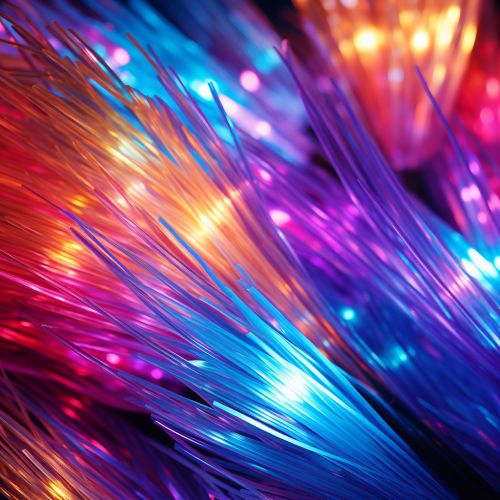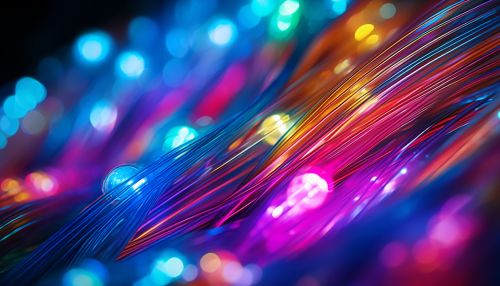Optical Fiber
Introduction
Optical fiber is a flexible, transparent fiber made by drawing glass (silica) or plastic to a diameter slightly thicker than that of a human hair. Optical fibers are used most often as a means to transmit light between the two ends of the fiber and find wide usage in fiber-optic communications, where they permit transmission over longer distances and at higher bandwidths (data rates) than electrical cables.


History
The history of optical fiber dates back to the 19th century. In 1854, John Tyndall, a British physicist, demonstrated that light could travel through a curved stream of water thereby proving that a light signal could be bent. This laid the foundation for the invention of optical fiber.
Structure
Optical fiber consists of a core and a cladding layer, selected for total internal reflection due to the difference in the refractive index between the two. In practical fibers, the cladding is usually coated with a layer of acrylate polymer or polyimide. This coating protects the fiber from damage but does not contribute to its optical waveguide properties.
Types of Optical Fiber
There are two main types of optical fiber used in optic communications: single-mode optical fibers (SMF) and multi-mode optical fibers (MMF).
Single-Mode Optical Fibers
Single-mode optical fibers have a small core (about 3.5x10−4 inches / 9 micrometers diameter) and transmit infrared laser light (wavelengths of 1,300 or 1,550 nanometers).
Multi-Mode Optical Fibers
Multi-mode optical fibers have a larger core (2.5x10−3 inches / 62.5 micrometers diameter or larger) and transmit infrared light from light-emitting diodes (LEDs).
Uses of Optical Fiber
Optical fibers can be used as a medium for telecommunication and networking because it is flexible and can be bundled as cables. It is especially advantageous for long-distance communications, because infrared light propagates through the fiber with much lower attenuation compared to electrical cables.
Advantages and Disadvantages
Like all technologies, optical fiber has its own advantages and disadvantages.
Advantages
Some of the key advantages of optical fiber include its high data carrying capacity, immunity to electromagnetic interference, and safety and security.
Disadvantages
Despite its many advantages, optical fiber also has some disadvantages. These include its cost, difficulty of installation, and susceptibility to physical damage.
Future of Optical Fiber
The future of optical fiber looks promising with the advent of newer technologies such as photonic-crystal fiber, which guides light by diffraction from a periodic structure, and fiber-optic sensors, which is an optical fiber device that senses some variable such as temperature, pressure, or strain.
